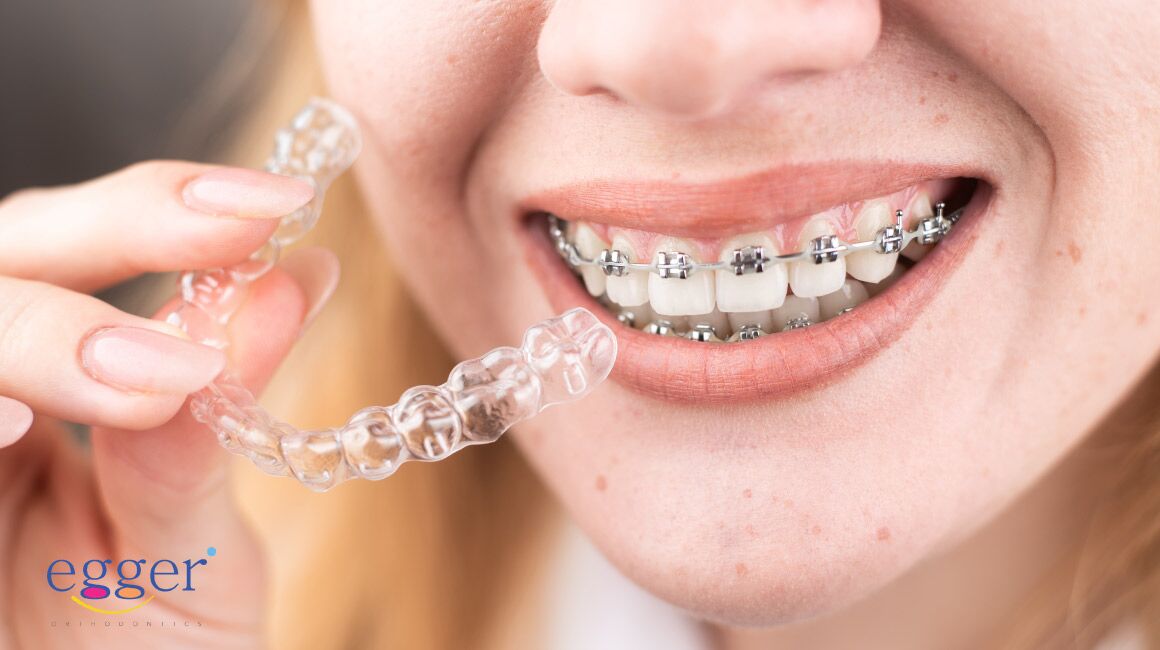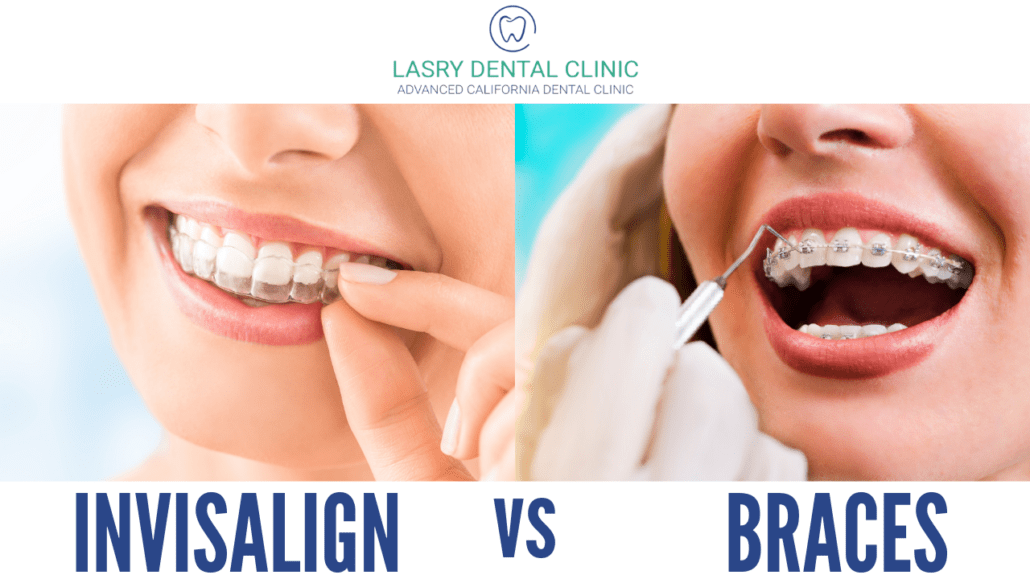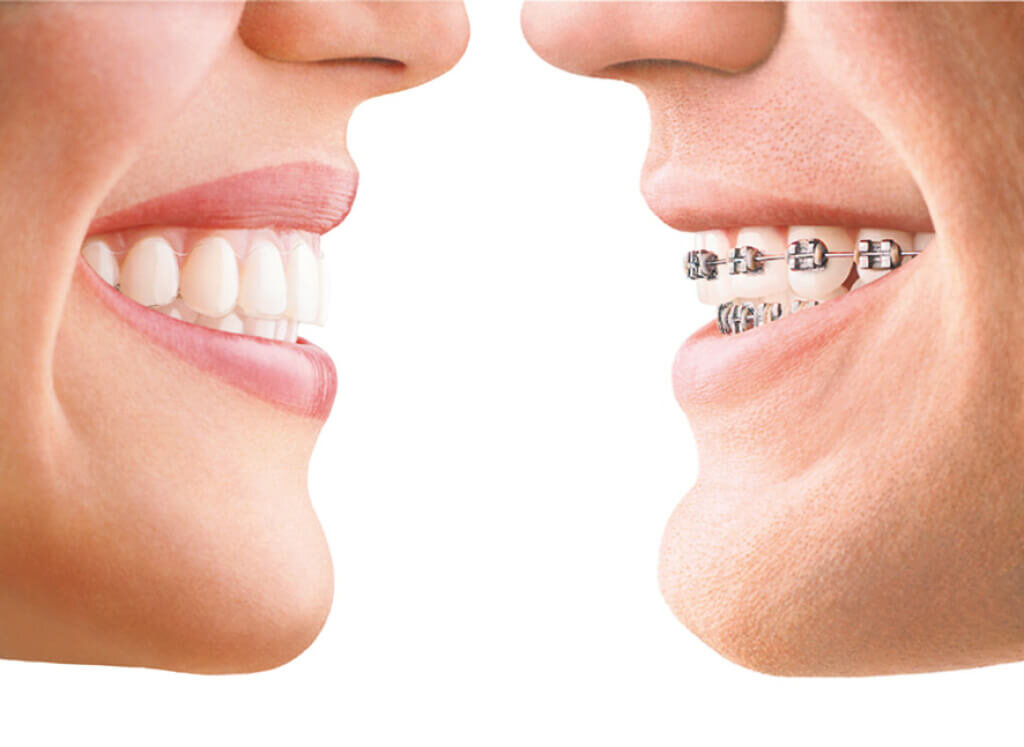Discover the Benefits of Invisalign for a Perfect Smile Change
Discover the Benefits of Invisalign for a Perfect Smile Change
Blog Article
Invisalign vs. Traditional Braces: Which Option Is Right for You?
When considering orthodontic therapy, the option between Invisalign and standard dental braces provides a number of vital variables that merit cautious examination. Invisalign provides a very discreet choice with removable aligners, while standard dental braces offer a more visible yet efficient service for extreme imbalance.
Review of Treatment Choices

On the other hand, standard braces contain metal braces and cables that are adhered to the teeth. This technique uses continuous stress with time to achieve placement. While reliable for complicated orthodontic concerns, traditional dental braces call for regular visits for modifications and can pose challenges in preserving dental health as a result of the difficulty of cleaning up about braces and wires.
Both choices have their values, and the option frequently depends upon particular oral conditions, lifestyle preferences, and person conformity. Inevitably, getting in touch with an orthodontic expert is essential for establishing the most ideal treatment strategy tailored to private demands. Understanding the nuances of each option can substantially influence the total success of orthodontic therapy.
Visual Considerations
A substantial factor influencing the choice in between Invisalign and conventional braces is the aesthetic charm each therapy offers. Invisalign aligners are crafted from clear plastic, making them practically undetectable when worn. This discreet appearance is particularly appealing to grownups and teenagers that may feel uneasy concerning their orthodontic therapy. The capability to preserve a natural smile throughout the positioning procedure can substantially improve the patient's confidence in social and professional setups.
On the other hand, standard braces contain steel braces and cables, which can be more noticeable. While advancements in orthodontic modern technology have led to the growth of smaller braces and colored elastics, standard dental braces still maintain a more obvious profile. For some individuals, the presence of dental braces might deter them from looking for essential treatment.
Eventually, the option in between Invisalign and typical dental braces might hinge on individual preferences regarding looks. People who focus on discretion typically lean towards Invisalign, while those that are less concerned regarding exposure may choose conventional braces. Comprehending the visual effects of each choice is important for making an informed choice that lines up with one's lifestyle and choices.
Comfort and Convenience

In regards to comfort, Invisalign aligners are removable, allowing patients to appreciate their favored foods without constraint and maintain ideal dental hygiene. Cleaning and flossing are simplified, as the aligners can be gotten throughout these routines, whereas standard dental braces call for cautious maneuvering around brackets and wires.
In contrast, conventional dental braces demand routine adjustments, making them much less practical for those with hectic schedules. Generally, the convenience and comfort of Invisalign make it an attractive choice for lots of people seeking orthodontic treatment.
Therapy Duration and Performance
While both Invisalign and typical braces are efficient in remedying dental imbalances, the period of treatment can differ substantially in between the two choices. Commonly, Invisalign therapy can take anywhere from 12 to 18 months, depending upon the intricacy of the case. The clear aligners work by progressively moving teeth right into their preferred placements, and routine look here follow-ups with an orthodontist aid make sure progression stays on course.
In comparison, standard dental braces typically call for a longer dedication, usually ranging from 18 months to three years. This results from their fixed nature and the usage of wires and brackets, which can be extra reliable for intricate cases and serious imbalances (Invisalign). The therapy efficiency of conventional braces is well-documented, as they enable specific changes and higher control over tooth motion
Ultimately, the selection between Invisalign and typical dental braces may depend upon both the anticipated therapy period and the certain dental concerns handy. Consulting with an orthodontist is vital, as they can provide tailored suggestions based upon specific requirements, ensuring the selected technique aligns with desired results and timeframes.
Cost Comparison and Insurance Policy Choices
Cost plays a significant duty in the decision-making process for individuals thinking about orthodontic treatment, whether opting for Invisalign or conventional dental braces. Generally, the cost of Invisalign arrays from $3,000 to $8,000, while typical dental braces normally set you back in between $2,000 and $6,000. Elements influencing these prices consist of the complexity of the situation, the duration of therapy, and geographical place.
Insurance insurance coverage can dramatically affect out-of-pocket expenses. Numerous dental insurance plans provide partial insurance coverage for orthodontic treatments, however the specifics can vary widely. It is vital for individuals to examine their insurance plan to determine the extent of protection for either alternative. Typically, traditional braces may be a lot more often covered by insurance strategies compared to Invisalign, which some insurers classify as a cosmetic procedure.
Furthermore, numerous orthodontic methods use versatile layaway plan, making both therapy choices extra easily accessible. People must make inquiries regarding potential funding alternatives and discounts for ahead of time settlements. Evaluating the complete expense, consisting of insurance advantages and layaway plan, is essential for making an educated decision that aligns with both visual preferences and budget factors to consider.

Final Thought
In recap, the option between Invisalign and conventional braces rests on numerous variables, consisting of aesthetic preferences, comfort, treatment period, and price. Invisalign offers a discreet, detachable option that facilitates oral health and look what i found nutritional versatility, while traditional dental braces may be better for complicated dental problems and often come with a lower rate factor. Eventually, consultation with an orthodontist is important to analyze individual situations and establish one you could check here of the most proper therapy choice for achieving optimal oral positioning.
When considering orthodontic treatment, the option between Invisalign and standard dental braces presents a number of important factors that merit mindful assessment.Contrasting Invisalign and conventional braces exposes distinct therapy options for orthodontic improvement.While both Invisalign and conventional dental braces are effective in dealing with dental imbalances, the duration of therapy can differ substantially between the two alternatives.Cost plays a substantial role in the decision-making process for people considering orthodontic therapy, whether deciding for Invisalign or conventional dental braces.In recap, the choice in between Invisalign and typical braces pivots on numerous factors, including visual choices, comfort, treatment period, and price.
Report this page